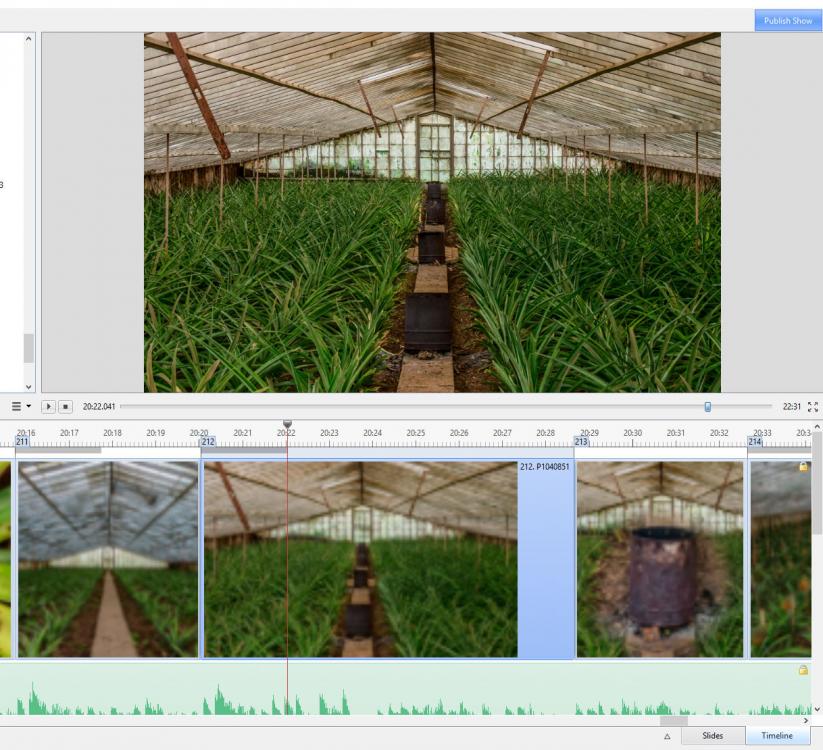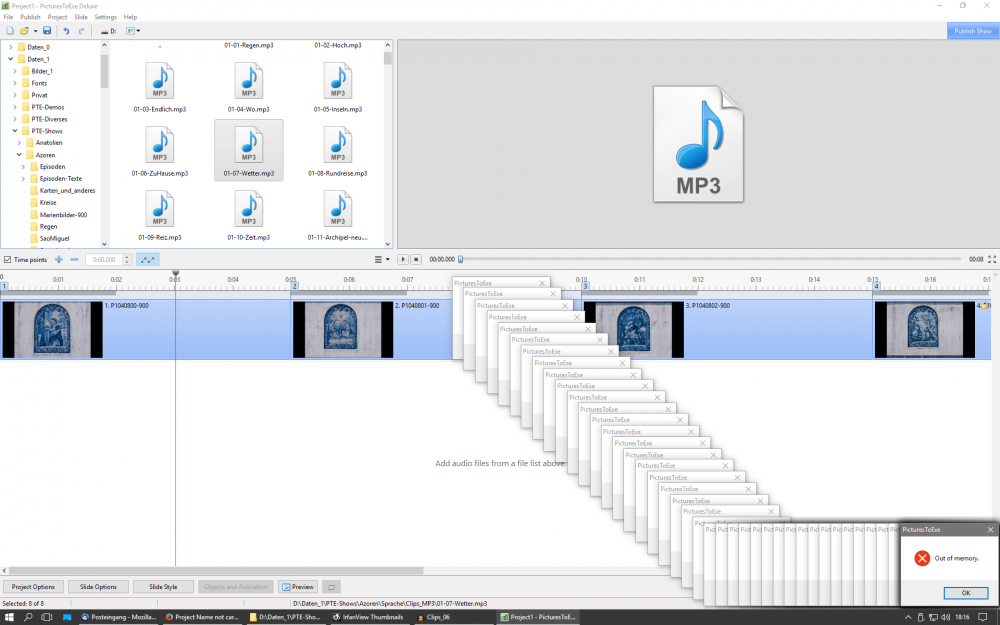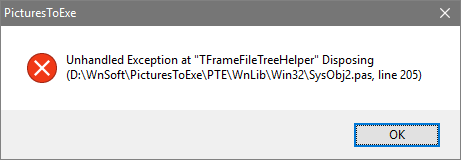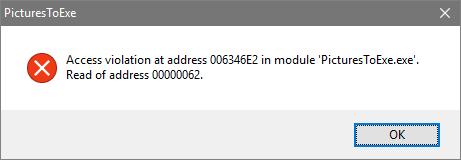-
Posts
1,422 -
Joined
-
Last visited
-
Days Won
13
Everything posted by jt49
-
Having seen the problem again, I repeat what I have already said here: There seem to be update problems in the Main Window (in large projects?). Having shifted images, transition points, and audio clips in the TL, the cursor of the TL sometimes does not run at the correct position. Toggling to the SL or re-opening the project cures the TL.
-
I wonder if this is to be regarded as a bug, I would do so. It seems to me that the thumbnails in the timeline receive their input from the slide list. So if the slide list's height is small, and you enlarge the slide track height of the timeline, you will see blurred thumbnails.
-
At present time I cannot give more detailed information, sorry!
-
Today, I had a similar error. The file list showed a folder with a lot of MP3 files. I did some clicking in the file list. I highlighted some clip and played it. Then it happened that I wasn't any longer in the position to operate in the file list. I still could operate outside the file list. But whenever I placed the mouse cursor into the file list, it it was shown in combination with an MP3 icon (which followed the mouse cursor), and I couldn't do anything there. I could save my project, but when closing PTE, I saw a similar error message as above (I did not manage to catch it). I tried to reproduce the error, and started a test project. Again I did some wild clicking it the file list, and I produced an out-of-memory error, see attached image. PTE did not stop to produce these out-of-memory messages. I stopped it using the Windows Task Manager.
-
It has already been mentioned by Gary (here) that there is a bug in the Main Window when toggling between Slide List (SL) and Timeline (TL). It happens in large projects (250 slides or more). I highlight a slide somewhere in the middle of the project, and it shows in the Mini Player. After toggling several times between TL and SL, the SL jumps either to beginning or to the end of the project, while the Mini Player still shows the highlighted slide in the middle. I have to start the Mini Player in order to get the SL back to the correct position. I never saw this behavior in V8. There also seem to be update problems in the Main Window (also in large projects?). Having shifted images, transition points, and audio clips in the TL, the cursor of the TL sometimes does not run at the correct position. Toggling or re-opening the project cures the TL.
-
I drag two images (Image_1 and Image_2) into the slide list. I open the first slide. It contains Image_1 as Main Image with index 1. I copy this image. I open slide 2, which contains Image_2 as Main image with index 1. I paste Image_1 into slide 2. Now slide 2 contains both images, and both have Main Index 1. This did not happen in version 8. If I then replace one of the two (different) images (having the same index) by Image_3, slide 2 then contains only Image_3, but contains it twice.
-
This did not happen in Version 8. It should be possible to enter more than one digit, also in the slide option window! My question (bug or feature) should be regarded as a joke
-
I start with a new project. I drag an image to the slide list. I open the slide options and any transition that allows me to enter manually a transition time. If i choose a time with a single digit following the decimal point, things are OK. If I enter 2 or 3 digits, things go wrong. Examples: 0.75 is changed to 0.699; 2.43 is changed to 2.399; 3.77 is changed to 3.7 ..... Is it a bug, or is it a feature?
-
Jeff, It's fine that we agree that color filters are not to be regarded as modifiers Now you ask if the given behavior is to be regarded as an important problem. Of course, it isn't. It is just an inconsistency
-
Correctness means here "correctness by definition". But is it a good definition to regard color filters as modifiers. I don't think so! What is a key frame? Key frames provide the possibility to define state information for animated objects. We can fix size, position, blur, and other state parameters of an object at a particular point of time. On times between key frames the state parameters of the animated object are evaluated via some kind of interpolation. What is a modifier (or what should a modifier be)? Modifiers allow us to have influence on the interpolation process mentioned above, on the change of the state parameters from one key frame to another one. Example: We define the speed profile with which the blur changes between two key frames. With these definitions in mind I cannot accept a color filter like Sepia as a modifier. A modifier has to refer to a state parameter that is to be changed between key frames. So for me the color filter must be regarded as a state parameter similar to Blur, Zoom, or Pan, and we have Animation Speed as a corresponding modifier. The original poster has been correct to point out his observation in this thread. Color correction is a state parameter that shows an inconsistent behavior when creating new key frames. This is not a serious problem. But I do not accept the "modifier definition". It is odd!
-
It is very likely that I did it ! Looking at the error message: Drive D is my data drive, and a folder WnSoft does not exist there
-
Sorry, presently I cannot reproduce the error. I switched between German and English. If I remember it correctly, the program did not crash, but it was in a particular state where changes from one language to another one always showed an error message. The version was 9.08.
-
The audio track height can have any (integer) value between 75 and 400. So I would not regard a toggle as that useful. I would like to see individual heights for audio tracks, similar to Audacity, where you can change the height of a single track by dragging, while the other track heights remain invariant. In addition to that I like to repeat my former suggestion for manual input for audio key points
-
-
We all expect new features from PTE, and the program gets larger and larger. In order to maintain the software it is indispensable to get rid of functions that are not of much use today.
-

Critical Sound Volume Changes
jt49 replied to Barry Beckham's topic in Suggestions for Next Versions
It helps, to some extent. Nevertheless it is an unpleasant workaround! -

Critical Sound Volume Changes
jt49 replied to Barry Beckham's topic in Suggestions for Next Versions
In 2015 I asked for this feature (here), but my request was not successful -
I don't see any reason why this should be changed. In the O&A timeline I can see the global times (which I need reasons of synchronization), while in the animation tab I see the relative time of a highlighted key frame. That's fine for me.
-
-

Adjust Time Range-duration does not adjust in Timeline
jt49 replied to goddi's topic in Troubleshooting
When I look at the timeline, I only see the durations of the slides, but not the lengths of the videos that are contained inside the slides. A single slide may contain 10 or more videos all of which may have different lengths. If you now adjust the time range of one of these videos, what should happen to the duration of the corresponding slide? You are looking at a very special situation. But if you want to see a feature where the adjustment of the time range should have an effect on the slide duration, you should provide an appropriate specification of this feature. -

Adjust Time Range-duration does not adjust in Timeline
jt49 replied to goddi's topic in Troubleshooting
The video does not have a duration in the timeline. The slide containing the video as an object has that kind of duration. This slide may contain other objects. Why should its duration be changed automatically? This would spoil the synchronization of all subsequent slides. Another feature with an awful side effect (like KFSD) -
Maybe it is a question of naming. If this function would really do what its name says, it would be nonsense. So the name should be: Hide child objects in case of hidden parent (maybe too long)
-
It seems to work as in V8.
-
When the blur effect was introduced, there was a discussion it the blur effect should preserve the edges or not. The present blur effect does not preserve edges, and the outer parts of the blurred image become transparent. This is fine in a lot of cases, but not in all cases. In cases when dealing with background images, or with images having a border, I often would like to see a blur effect that preserves the edges, and which leaves the whole image opaque (like Gaussian blur in Photoshop). If I remember it correctly, this feature has been announced for future versions when version 8 was released. A request to all experts: Please do not post any workarounds here, I am aware of them




